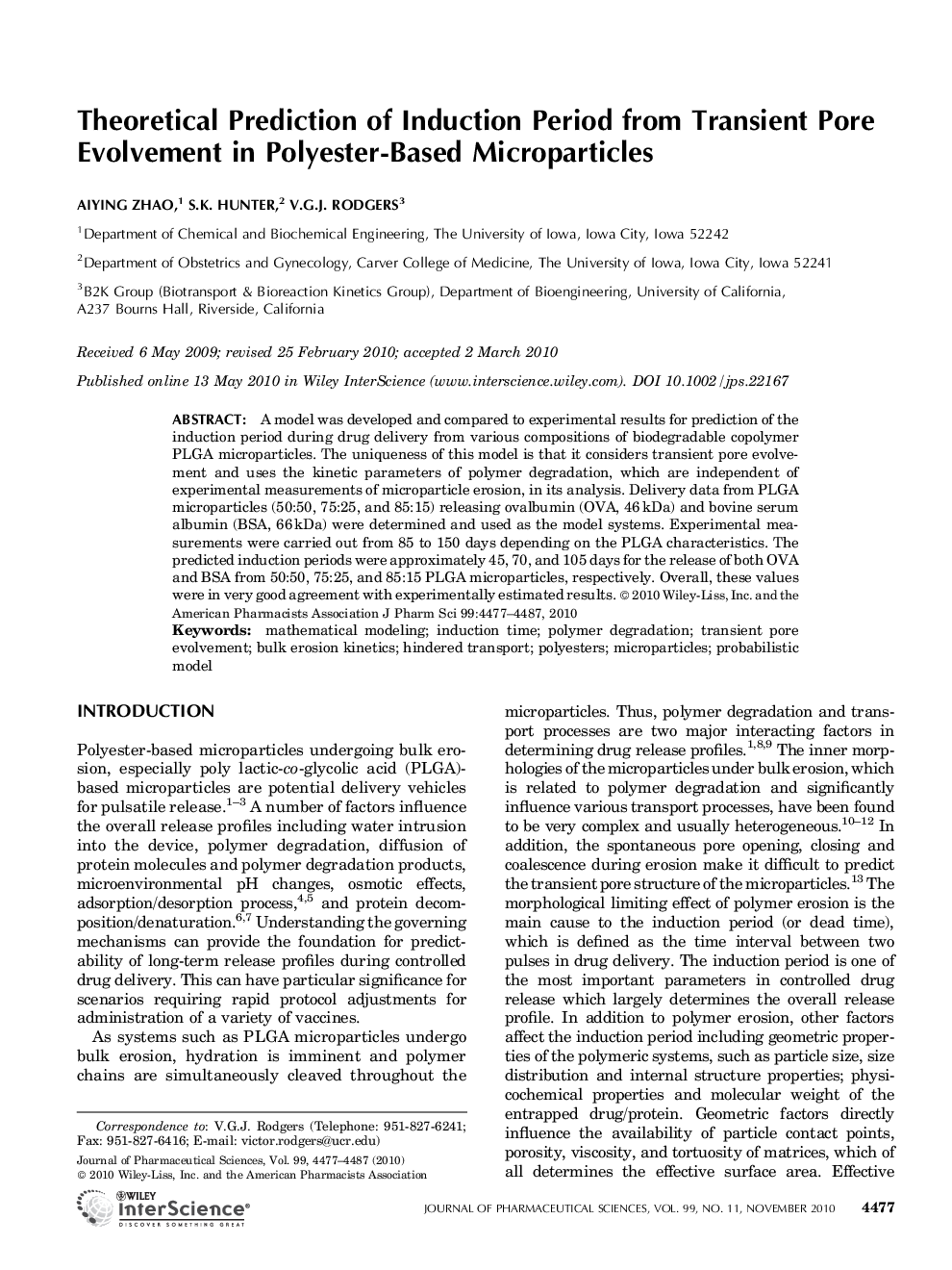| Article ID | Journal | Published Year | Pages | File Type |
|---|---|---|---|---|
| 2486899 | Journal of Pharmaceutical Sciences | 2010 | 11 Pages |
Abstract
A model was developed and compared to experimental results for prediction of the induction period during drug delivery from various compositions of biodegradable copolymer PLGA microparticles. The uniqueness of this model is that it considers transient pore evolvement and uses the kinetic parameters of polymer degradation, which are independent of experimental measurements of microparticle erosion, in its analysis. Delivery data from PLGA microparticles (50:50, 75:25, and 85:15) releasing ovalbumin (OVA, 46Â kDa) and bovine serum albumin (BSA, 66Â kDa) were determined and used as the model systems. Experimental measurements were carried out from 85 to 150 days depending on the PLGA characteristics. The predicted induction periods were approximately 45, 70, and 105 days for the release of both OVA and BSA from 50:50, 75:25, and 85:15 PLGA microparticles, respectively. Overall, these values were in very good agreement with experimentally estimated results. © 2010 Wiley-Liss, Inc. and the American Pharmacists Association J Pharm Sci 99:4477-4487, 2010
Keywords
Related Topics
Health Sciences
Pharmacology, Toxicology and Pharmaceutical Science
Drug Discovery
Authors
Aiying Zhao, S.K. Hunter, V.G.J. Rodgers,
